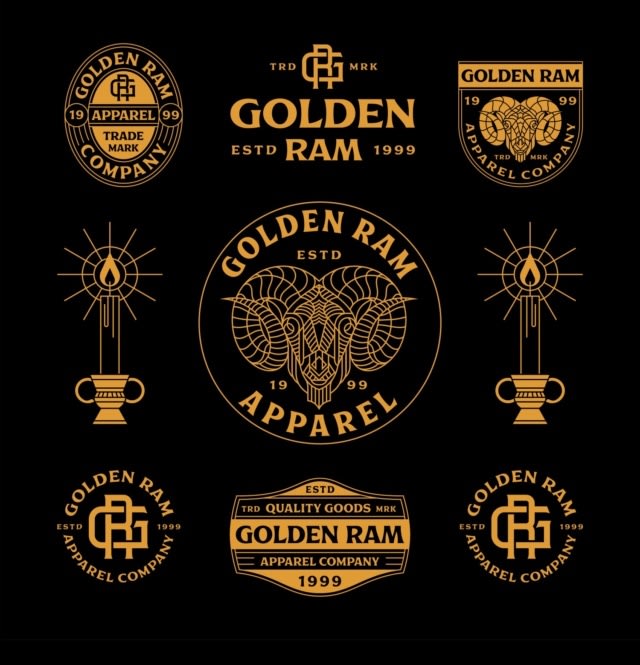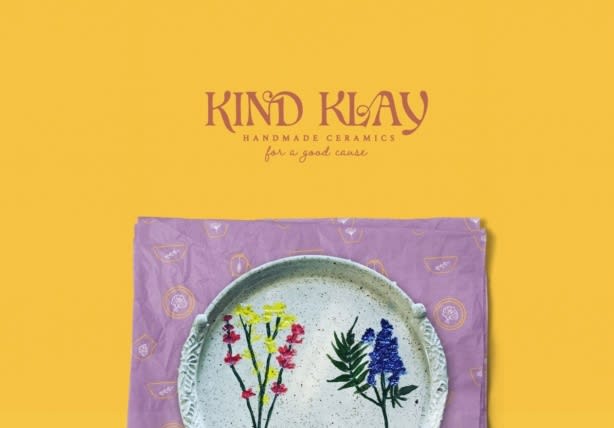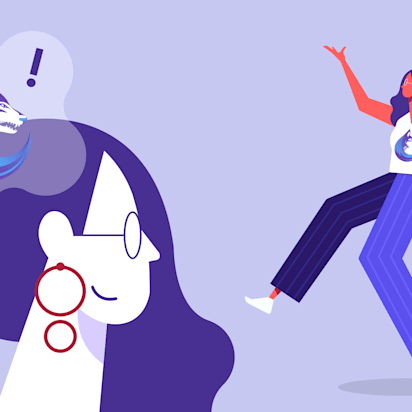Communication is… um… uh… how do I say this… difficult. Explaining what you want can be problematic even with friends, let alone when it’s a complete stranger and there’s money involved. When it comes to creating a custom logo, both logo designers and clients have a lot to explain, but you won’t get all the answers unless you ask the right logo questions.
In this article, we list the top questions about logo design, separated into two sections: one for designers to ask clients and the other for clients to ask designers. Use it as a checklist right at the start of a project or even an initial meeting to make sure no logo design questions fall through the cracks.
Why communication is crucial for logo design
Before we get into the specific logo questions, let’s talk about why communication is so important when it comes to logo design or all design for that matter.
Both parties have a lot going on in their heads that the other party needs to know. The more information they share with each other, the closer both get to finishing the project in the way they want. Clients, of course, have certain preferences and goals, while designers have certain design techniques and work policies.
The problem is, you can never be quite sure what’s going on in your colleague’s head until you ask. But if it’s your first time working with this designer or client, you may not be sure which questions are best; that’s where this article comes in handy.

However, for the sake of saving time, we won’t cover the bare essentials, specifically design elements and payment concerns. Though, we want to remind you here not to forget about them.
Whenever starting a new logo design project, always ask about the design elements (colors, fonts, wording and imagery), as well as particulars about payment (how much, method, and when to receive it).
Once these are out of the way, you’re free to dive into the more substantial logo brief questions below
11 logo questions for clients to ask designers
1. What is a realistic timeline for the project?
One of the most common points of contention between designers and clients is when deliverables will be ready. You can avoid future disappointments just by setting realistic expectations from the start. Setting hard deadlines can allow you to schedule all other matters, like what you can do with the logo once it’s finished.
Just be mindful that your ideal timeframe isn’t always possible. Ask this question to start the discussion not only about the project deadline but also about what milestones to expect during the process.
2. How do you prefer to communicate?
It’s one thing to have a sit-down or call at the start of a project, but what about contact during the design process? Different designers have different preferences about how to communicate; some don’t mind intermittent texts or chats, while others can turn their phones off for days.
It’s helpful to ask about both the method and frequency of communicating during the process, especially if you prefer a more hands-on approach. Depending on your management style, you may want to choose a designer who’s more in sync.
3. What do you need from us?
The more your designer knows about your company, the better the logo design will turn out. But designers don’t always have a list handy of everything they’ll need. You can take a more proactive role by just asking them directly what kinds of documents or details they’ll need.
Usually, business documents like brand personas and branding style guides directly relate to logo design. If you have any special documents like marketing reports, those might be useful too. Ask your designer what would be useful to them.

4. What is your experience in our particular industry?
The world’s best designer of restaurant logos isn’t necessarily good at tech logos. It’s not only about knowing how the industry works but also about knowing the target customers of that industry. It always helps if your designer has prior experience working with your audience.
Take a moment to learn about your designer’s experience in your particular industry. If they don’t have much experience but you still like their style, feel free to educate them on some of the nuances of your particular business.
5. What is your creative process?
Designers all have their unique habits and work routines, which may or may not be problematic, depending on your needs. To prevent unrealistic expectations, ask about how they plan to go about your logo design. For example, if your designer is a night owl, you shouldn’t expect handovers at the end of a business day.
This also directly ties into setting a realistic timeline. Your design may have a lengthy logo brainstorming process, where days go by without any tangible advancement. Then, in a few hours, they have a completed logo design ready. Or, the opposite could be the case: a quick brainstorming session followed by days of detailed designing. If you don’t ask, you might get the wrong impression when progress isn’t what you thought.
6. What services are included in your fee?
This is a more technical question but it should be settled as early as possible. A lot of times, clients make assumptions about what they’re receiving and don’t ask for any follow-ups after hearing the designer’s fee.
In particular, ask about revisions, extra time or any logo variations you need (i.e., a more simplified version of the logo for mobile). If you have any particular demands for your company, such as in-office meetings, mention them early.

7. How is copyright handled?
This is another common point of contention that’s best addressed early on. Make it clear who owns the logo design or individual rights. It’s best to cement these issues sooner rather than later.
Using platforms like one of Vistaprint’s design services, 99designs by Vista, each designer owns the copyright to their designs until they are declared a contest winner by a client. Then the rights to the winning design are transferred over to the client.
8. Could you give me some references?
Hiring a stranger can be nerve-wracking, even if everything appears above board. If you have any doubts when working with a freelancer, it’s a good idea to check their previous work or even contact some former clients to see what working with them is like.
9. Will you be working on our project personally?
While often solitary, freelancer designers have been known to travel in groups. If you’re working with a design agency or team, it’s good to double-check who, exactly, is working on your project. This quick question can save you some stress later on; if you have your heart set on a certain designer, you’ll be heartbroken to discover an assistant or partner actually handling your logo design.

10. What file format will we receive?
This is another technical question that’s best addressed early on. For one thing, you may need a specific file format for the medium you’re using; the best formats for social media aren’t always the best formats for websites. For this reason, you may need more than one format, especially if you have different versions of your logo.
Moreover, if the designer uses a specific software that you don’t have access to, you’ll have to make arrangements for one party to convert the file. Sometimes this just takes a few extra clicks, but it’s good to get it out in the open from the start.
11. [After seeing early designs] What is the purpose of this part?
This question is for after the designer turns over something, even some early concept sketches. A lot of clients get frustrated that the designer isn’t getting down what’s in their head. Most of these misunderstandings can be handled by being more descriptive about what you want in the project from the start, but sometimes, even after explaining everything, it still doesn’t look right.
In this case, asking about the purpose of a particular part is the best way to rectify the confusion. Chances are, the designer added it for a reason, even if you didn’t explicitly request it. There’s tons of nuance to logo design that only graphic designers are familiar with, so simply ask them about why they included that. Their answer may make you fall in love with that aspect!
After you’ve selected a designer…
Once you’ve selected the designer you’d like to work with, it’ll be time to get started on writing your design brief. Watch the video below to see the best ways to work with a professional designer to get a logo design you’ll love, from how to write a perfect brief, to reviewing your design drafts and ensuring a smooth handover. Check out this article to learn about the three steps to create the perfect logo design brief.
11 logo questions for designers to ask clients
1. What are your overall business goals?
Because of preconceptions, some clients don’t understand how business goals can be connected to logo design.
They might think logos are strictly superficial, so they won’t offer up much behind-the-scenes information about the company. You may need to take the lead and ask them directly.
You can get into the specifics of what the logo is expected to accomplish—that’s the next question—but you should also understand the company’s “big picture.”
Knowing about any potential expansions or special concerns can help you optimize the logo design for their specific needs.
2. What do you want this logo to accomplish?
Once you know the general trajectory the company is on, you can get into the specifics of the logo and where it fits in the grand scheme of things. For example, a new brand might want its logo to improve brand awareness and attract attention, whereas a more established company might want a new logo to change its brand identity and target a new market.
Learn tips and insights from the world’s most famous logo on how to create a logo that suits your brand and gets attention.

Logo design by spARTan via 99designs by Vista.
3. Who is your target audience?
A brand’s logo design should appeal to the target customers above all, even more than the company executives (or even you, the designer).
Try to get your client to be as specific as possible. A lot of them will give general answers like “young people” or “small businesses,” but the more you can hone in on a particular niche, the more effectively you can design the logo. Any information about age, location, income, values etc. can help inform your design decisions.
4. What are your most successful marketing channels?
This is a useful question for two reasons. First, it provides insight into the kind of company and marketing they use. Whether they invest more in digital marketing or traditional marketing can tell you a lot about the company and its branding style.
Second, it tells you where the logo will be displayed most often. If they primarily use billboards or posters for advertising, you’re free to add more intricate details to the logo design. If they favor social media marketing, you might want to design a simpler, less detailed logo for mobile screens.
5. How do you want your brand perceived?
In other words, “what is your brand identity?” If you’re lucky, your client will know precisely how to answer this logo question. However, some companies largely ignore branding as a whole, so terms like “brand identity” or “brand personality” might be foreign to them.

Logo design by Yokaona via 99designs by Vista.
Try asking plenty of follow-ups until you have a good idea of how they want their branding strategy to go. Be sure to cover all the topics surrounding brand personality (casual vs. formal, modern vs. traditional), but also the more business-centric topics, like their ideal market position.
6. What are your brand values and mission?
Today, brand values and mission statements are more important than ever. Not every company has firmly established values, but if they do, you’ll want to know about them! A brand dedicated to environmentalism might benefit from a leaf flourish in its logo; a family brand might love the imagery of a family. The more their business model is tied to their values, the more important it is to reflect that in the logo design.

Logo design by KisaDesign via 99designs by Vista.
7. Are there any topics or themes you want to avoid?
This logo question is more of a precaution, just to make sure you don’t accidentally stray into unwanted territory. Some companies want to avoid certain issues to uphold their image, while other companies might have suffered bad press in the past and don’t want to unintentionally drudge it up with their logo. You can’t exactly guess about these kinds of things, so it’s better to just ask outright.
8. Who are your main competitors?
You can learn a lot about a company by who their main rivals are. For one thing, their competitors’ logos can influence how you design your client’s logo, specifically how to make it stand out. It’s usually helpful to take a look at their competitor’s logo and ask which parts your client likes and which they don’t.
Because their competition works in the same industry, you’ll have to be careful about industry trends. Unless your client requests it, you don’t want to accidentally copy someone else’s logo. Designing a logo by the book for a certain industry could unintentionally lead you to create something similar to their competition, so it’s good to research this beforehand.
9. What existing logos do you admire/want to emulate?
If your client is stuck on the details of what they want the logo to look like, this question could help inspire them. You can even take a look at some relevant, preexisting logos together and ask them to isolate which elements they like and which they don’t. Often, people don’t know what they want or don’t want until they see it with their own eyes.

Logo design by Pokrov via 99designs by Vista.
10. What do you like and dislike about your current branding?
Every logo design, whether built from scratch or as part of a logo redesign, is an opportunity to improve on the greater branding strategy. Clients may not understand this potential as much as the designers do, so this question helps get them thinking about it.
If the client’s answers are non-specific, it might help to offer some suggestions or present some hypotheticals. As we mentioned above, some clients don’t pay much attention to branding strategy, which makes you the expert by default.
11. How decisive/indecisive are you?
This logo question is more of a conversation starter—it’s better to anticipate and deal with indecisiveness early in the design process than suffer its consequences at the end. You may not get an honest answer, but their response should at least offer some insight.
To prepare them, it helps to present a short list of decisions they’ll be expected to make, anything from specific design choices like colors or imagery to more technical aspects like formatting or resolution. If they are indecisive, the sooner they’re prepared for these choices, the better.

Logo design by TikaDesign via 99designs by Vista.
You can’t collaborate alone!
Always remember that communication is the key to successful collaboration. These logo questions will help to get the conversation going. Just pick and choose the ones that are applicable to the logo project you are working on. Whether you are seeking a professional designer to help or taking the DIY route, answering these questions will be a good starting place to get a sense of your ideal logo.
Once you’ve got your logo, learn about trademarking your logo to find out how to protect your brand and logo from copycats and infringement.
Author: Matt Ellis
This article was originally published in 2021. It has been updated with new examples and information.




